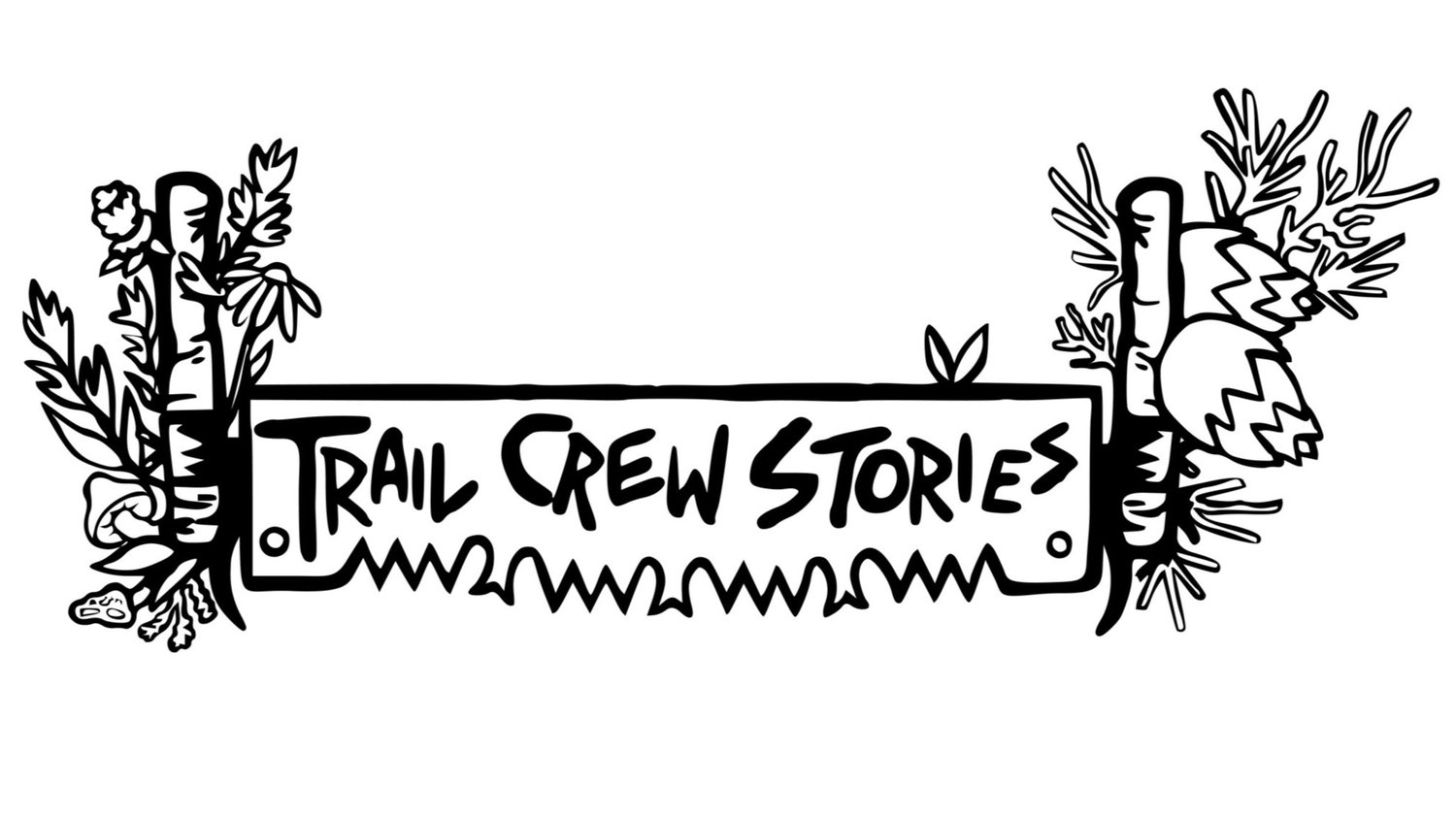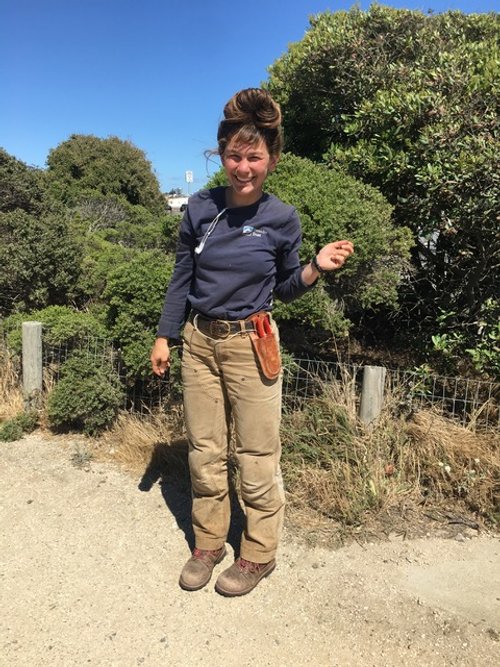The people who build trails, and how they do it.
Trail Crew Stories is a project to share the stories, methods, writings, and art of the community of trail workers. Some parts practical guide, some parts oral history, all parts content to inspire and educate both seasoned trail workers and casual hikers alike.
Trail work is an obscure tradecraft rarely seen and often misunderstood. Nonetheless, it retains a colorful- albeit niche- cultural legacy cultivated by a seldom-seen cadre of laborers who both preserve traditional techniques and challenge existing norms. It is a rugged, intense, and arcane profession. For those seeking to learn more, you’re in the right place.
A Manifesto of Sorts
Life as a trail worker is hard. The labor is physically demanding, the work schedules irregular, the settings rustic and isolating, and the weather merciless and inescapable. A career of living in the wilderness and performing extremely difficult manual labor for low pay and little recognition lures a particular kind of person with a spirit of adventure and high tolerance for discomfort.
Everyone who has done trail work, whether professionally or as a volunteer, has a story to tell about it. In sharing individual stories, I hope to retain some of the nuance that would otherwise be lost in generalization. Trail work, like any profession, has its own challenges, drawbacks, and shortcomings. Plenty of people pursuing trail work end up miserable, whether from their own poor attitude or as the result of a toxic crew dynamic, bad practices, or terrible leadership. Not all crews have the wherewithal to endure the high-level intensity of the job. While I have the utmost admiration for the craft and culture of trail work, I also believe it is important to be wary of over-romanticizing the work. Sharing honest perspectives, I hope, will keep this profession grounded and accessible in our very flawed, very human society.
Trail work is not for everyone, and I will make no claims that this is a “better” way of living. But for the folks who have chosen to pursue the trade as a lifestyle, trail work is everything. In the community of trail workers, there are legendary figures and icons-to-be; historic masters and promising up-and-comers. Perhaps in recognizing these individuals, we can inspire the next generation to follow in their stead.
And for those folks who will never pursue trail work professionally, I believe that there is an “existence value” in knowing that trail workers are out there. Even the most steadfast indoorsman may be comforted to know that somewhere out there, in the hinterlands of mountains and desert and forest, there is a small army of crusty go-getters laboring to make the outdoors both more sustainable and accessible to the public. Most of these jobs are made possible by a modest sum of government funding, representing one of the more esoteric uses of public resources. A near-inconsequential quantity of government spending is being used to support a near-invisible labor force carrying on centuries-old building practices in some of the most rugged places. And these labors are all in service of enabling an experience widely considered to be transcendent: the exploration of wild places.
Within this esoteric subculture is a relatively evanescent oral history. The seasonal nature of trail work means that many people come and go. It is a job that takes a physical toll on the body for modest wages, so for many trail workers it becomes a short career that is neither physically nor financially sustainable in the long term. Frequent churn of the workforce means that stories are rarely recorded and often forgotten. Maybe a few specific stories will be passed down orally from season to season, and these tend to grow into tall tales as details are forgotten and replaced with creative storytelling. In sharing characters and stories from this world, I hope to record something that may otherwise be lost in the hubbub of seasonal turnover.
In this project, I peel back the curtain on a culture and profession that oftentimes prides itself on being unseen, where invisibility signifies work of the highest quality. Trail work tends to attract those who eschew mainstream society more generally; folks who are content to live in a tent in the woods, far from the prying eyes of “the public.” Some of these individuals may not be thrilled about a project that shares these secrets.
I believe, however, that it is due time to share these techniques and stories. After all, I was completely ignorant of the notion of professional trail work until through luck and circumstance I met the right people during a trail volunteer day. Trail workers are often in government employ, paid and equipped using public funds, laboring to improve public spaces. They work extremely hard in some of the most intense environments on the planet for low wages and little recognition. The citizens of America deserve to know that not all of their tax dollars are being spent on laser-guided missiles or superhighways or corporate bailouts. In a society where our lives are increasingly digital, where young people spend less time outdoors, the reality of trail work offers an alternative. A greater public awareness of trail work will only improve the craft and ensure its perpetuation for future generations.
And so, reader, I welcome you from whichever trail has brought you here. Walk, see, and become more attuned to the humble path conveying you into the wilderness. Happy trails.
-JG
About the editors
Photo courtesy of Heather Wilson
Joe Gibson is a trail worker, writer, and photographer. He has worked for AmeriCorps NCCC, the Golden Gate National Parks Conservancy, Parks Project, Rocky Mountain Field Institute, and the National Park Service. He holds a Bachelor of Arts Degree in Foreign Affairs and Spanish from the University of Virginia.
When he’s not working on trail-related projects, he can be found cycling, surfing, and playing with his camera. Contact Joe at trailcrewstories@gmail.com.
Laura Booth practices habitat restoration, makes poems, and surfs in the San Francisco Bay Area. Reach her for editing work or other creative collaborations at laurasbooth@gmail.com.
FAQs
-
I want to share your stories and perspectives! Both trail workers and non-trail workers alike are encourage to submit stories, art, photos, etc. More information on the submissions page.
-
Absolutely! Trail Crew Stories is a passion project by Joe Gibson. Any donation will be used to offset the costs of gas, coffee, web fees, camera gear, etc, all of which Joe currently pays for out of pocket with his modest trail worker wages. The web host charges a premium for a donation button, so you won’t find one here (for now), but you can Venmo Joe some gas money to keep him on the road at @jfgibson.
-
Trail Crew Stories is a personal passion project and should not be assumed to reflect the official viewpoints or policies of any of the organizations or agencies discussed. Although Joe currently works for the National Park Service, he must disclose that none of the content within represents any official stance or policy of the federal government or National Park Service.
-
Scroll up and read the manifesto!



